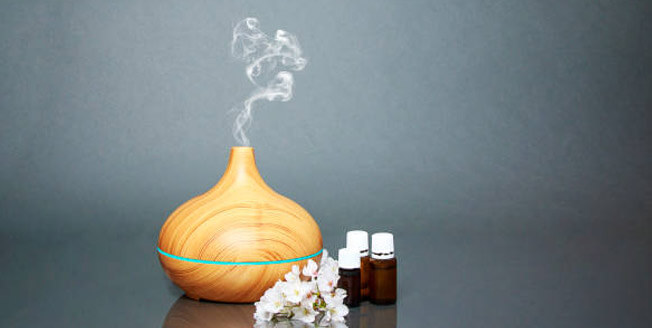
Abstract
This application note demonstrates a method for sampling and analyzing VOC emissions of essential oils from in-home diffusers. As part of this work, VOC emissions from three different popular types of essential oils were examined. Additionally, one ultrasonic diffuser and two-nebulizing diffusers were selected to compare emissions output of VOC’s for a specific lemon essential oil. For the most abundant VOC in lemon oil, limonene, the emitted concentration was determined for the ultrasonic diffuser and one nebulizing diffuser.
Introduction
Recently, essential oil emissions from in-home have become a topic of increasing interest due to potential implications on indoor air quality. Benefits of essential oils includes reducing stress and anxiety while improving alertness and brain function. Conversely, the negative effect of essential oil diffusers and their impact on air quality and human health is also widely debated. Adverse health effects caused by essential oils include allergic reactions or causing respiratory stress on asthmatics. Additionally, cats and dogs are far more sensitive to odors than humans, so many essential oils are known to have potentially damaging health effects to pets.(1,2,3,4)
Regardless of the debated pros and cons of essential oils, the essential oil market has grown in recent years, and the market has become flooded with different types and brands of essential oil diffusers. Common types of diffusers include ultrasonic (water-based), nebulizing, passive, and heated diffusers. Passive diffusers are often subject to uneven evaporation of components while heated diffusers can potentially cause chemical changes to the essential oil. For these reasons, ultrasonic and nebulizing diffusers are considered to be the most popular within the market.
In this application note, VOC emissions from three different types of essential oils are examined. Three commercial in-home diffusers were also selected to analyze the VOC emissions. VOC emissions are sampled onto conditioned thermal desorption tubes using a CDS Air Sampling device, which comes with a built-in vacuum pump to assist with drawing air through the thermal desorption tube. After the completion of sampling, thermal desorption was done using the CDS 7550S automated Thermal Desorber is combined with GC-MS. Using lemon essential oil as a case study, emissions of VOC’s from different types of diffusers is compared and quantified.
>> Download the Full Application Note as a PDF
Visit CDS Analytical's Website for more information





